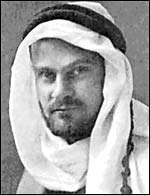IRANICA: INTRODUCTION
Like many American institutions, Bryn Mawr College holds a small collection of ceramics and works on paper from medieval Iran. Any one of these objects could be made to speak to the history of Iranian art and culture. Taken together, however, they testify more clearly to the enthusiasms that motivated western collectors of Iranica, and the mechanisms by which their desires were fulfilled. In this exhibit, we describe three “modes of transmission” through which objects made in Iran were translated to western collections.
The stories that we have chosen to tell do not address the particular collectors who purchased and donated these objects, but rather the broader cultural trends that rendered the collection of medieval Iranian art a natural activity. But it is worth mentioning two of those specific collectors at the outset. Donald Wilber (1907-1997), an American architectural historian and intelligence officer, first became interested in Iranian culture after seeing an exhibition of photographs of the Islamic architecture of Iran that was mounted by Arthur Upham Pope (1881-1969) at Princeton University in 1933. Between 1935 and 1939, Wilber made several trips to Iran as an associate of Pope’s Institute of Iranian Art and Archaeology. During this period, he purchased a number of the ceramic objects that are on display here.

Donald Wilber

Arthur Upham Pope
Wilber is a better documented collector than most, as he has left us a memoir in which he makes frequent mention of his many purchases – “rugs, pottery, miniatures, and smaller items.”1 But he never tells us why he began to collect in the first place; it seems simply to have been what a man of his time and milieu naturally did.
Thus, in what follows, we have made an effort to describe the processes by which this kind of collecting became natural. We have focused on the early part of the twentieth century, and two of the short essays that follow conclude with Arthur Pope, the man who introduced Wilber to things Iranian.
A caveat is, however, in order. The final object that we have chosen to display is not, in fact, from Iran, but from Ottoman Turkey; and it was given to Bryn Mawr, not by a connoisseur of the arts, but by Blanche Wolf Kohn ’08 (1886-1983), the co-founder of Philadelphia’s Settlement Museum School and a supporter of many local Jewish charities.2
Now, the appreciation of Persian art has all too often been coupled with disdain for the other cultural traditions that have contributed to Islamic civilization. In his book on Persian Art, the first of its kind in English, Major Robert Murdoch Smith (1835-1900) wrote that “Unlike the Arabs, the Persians have always been, and still are, artistic”; and furthermore, “the Turkish element in the population, although politically and religiously amalgamated with the Persian, has, however, never imbibed the artistic idiosyncrasies of the latter. Works of art are almost exclusively confined to the parts of the country inhabited by the old Aryan stock.”3
Smith was writing in the second half of the nineteenth century; but still in 1938, Arthur Pope, introducing his monumental Survey of Persian Art, would voice similar opinions. On the Arab invasions: “In its depths the Iranian spirit was scarcely even stirred by these aliens whom it could well dismiss as inferiors.” On the Seljuq Turks: “Virile as they were and on occasion ruthless, they were on the whole becomingly humble before the accomplished civilization of their new territory.”4
Had Blanche Kohn been fully a “woman of her time,” she might well have learned similar disdain for Turkish civilization, might never have acquired this small book, or at the very least might not have seen fit to leave it to her alma mater. Il ne faut pas être de son temps .
BWA & YR